How Hydrovac Trucks Help With Drainage Issues
Hydrovac trucks are used for more than just excavation.
Posted 04:01 September 23, 2024
Last Updated 04:01 September 23, 2024
 Hydrovac trucks have become an essential tool for addressing drainage issues, particularly when it comes to maintaining and repairing roof drains and pump pits. These trucks utilize a combination of high-pressure water and a powerful vacuum system to excavate and remove debris safely and efficiently, making them highly effective for clearing clogged drains and cleaning out pump pits. By following a non-destructive approach, hydrovac trucks provide a solution that minimizes the risks associated with traditional excavation methods, especially in sensitive areas like drainage systems.
Hydrovac trucks have become an essential tool for addressing drainage issues, particularly when it comes to maintaining and repairing roof drains and pump pits. These trucks utilize a combination of high-pressure water and a powerful vacuum system to excavate and remove debris safely and efficiently, making them highly effective for clearing clogged drains and cleaning out pump pits. By following a non-destructive approach, hydrovac trucks provide a solution that minimizes the risks associated with traditional excavation methods, especially in sensitive areas like drainage systems.
Roof drains play a crucial role in preventing water damage to buildings by channeling rainwater away from roofs and directing it into the drainage system. Over time, however, roof drains can become clogged with debris such as leaves, dirt, and other materials. When these drains are blocked, water can accumulate on the roof, potentially leading to leaks, structural damage, or even roof collapse in extreme cases. Traditional methods of clearing roof drains often involved manual digging or using heavy equipment, which carried the risk of damaging the drain or the surrounding structure.
Hydrovac trucks offer a much safer and more efficient way to address clogged roof drains. The high-pressure water jets used by hydrovac trucks can quickly break down and dislodge the debris that is blocking the drain, while the vacuum system removes it without leaving a mess. This method is particularly advantageous because it allows for targeted cleaning without damaging the roof or the drainage components. Additionally, hydrovac trucks can reach rooftop drains in hard-to-access areas or confined spaces, thanks to their long hoses and maneuverability, making them an ideal solution for large commercial buildings or residential properties with complex roof designs.
Another common drainage issue arises in pump pits, which are typically located in basements or low-lying areas to collect and pump out excess water. Pump pits are designed to prevent flooding by removing water that accumulates in these areas, but they can become filled with sediment, debris, and sludge over time. If not properly maintained, clogged pump pits can lead to drainage system failure, causing water to back up and flood the surrounding area. Traditionally, cleaning pump pits involved labor-intensive manual work or using mechanical equipment, both of which carried the risk of damaging the pump system or pipes.
Hydrovac trucks excel at cleaning pump pits due to their ability to safely remove debris without damaging the surrounding infrastructure. The high-pressure water system can be used to break up compacted debris or sludge in the pit, and the powerful vacuum will suck out the waste efficiently. This method is not only faster but also reduces the risk of damaging the pump mechanisms or the walls of the pit. Hydrovac trucks can also access pump pits in confined or hard-to-reach areas, such as small basements or underground locations, making them a versatile solution for a wide range of drainage challenges.
The precision of hydrovac trucks is another major advantage when dealing with drainage systems. Since roof drains and pump pits are often part of larger, interconnected drainage networks, any damage to one part of the system can lead to costly repairs or further drainage issues down the line. Hydrovac trucks are designed to minimize the risk of collateral damage during the cleaning process, as they do not require digging or the use of heavy equipment near the drainage components. This precision helps ensure that the drainage system remains intact and functional after maintenance.
In conclusion, hydrovac trucks provide an effective solution for addressing drainage issues related to roof drains and pump pits. Their ability to use high-pressure water to break up debris and a vacuum system to remove it ensures that drainage systems can be cleared quickly, safely, and without causing damage. The non-invasive nature of hydrovac technology makes it ideal for maintaining sensitive drainage infrastructure, preventing flooding, and ensuring that buildings and properties remain protected from water damage.
